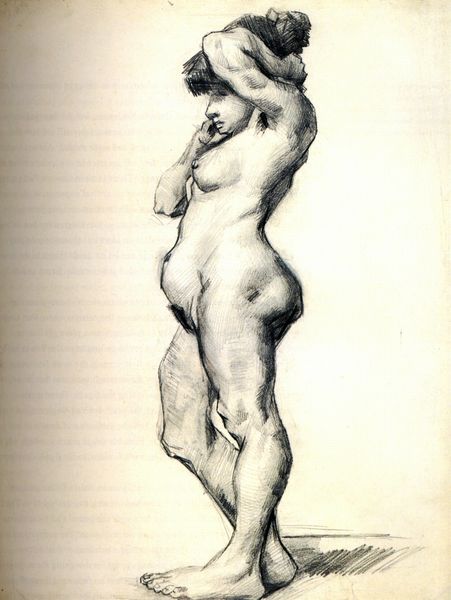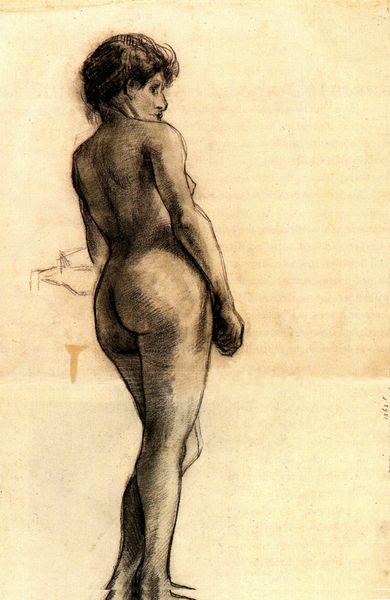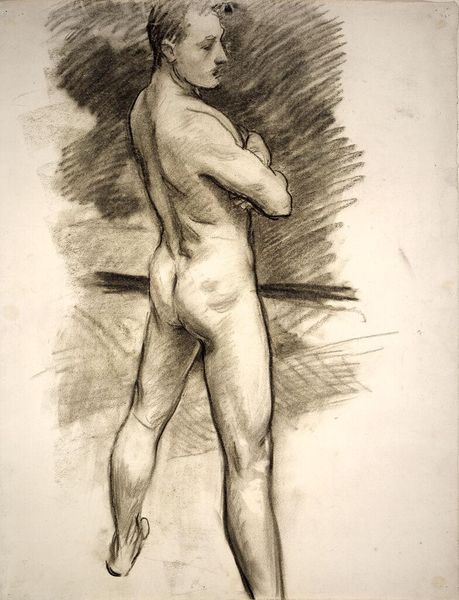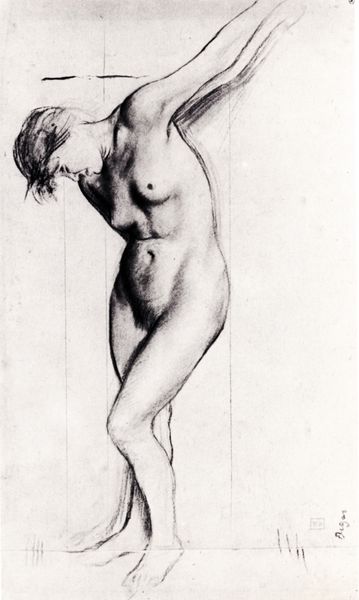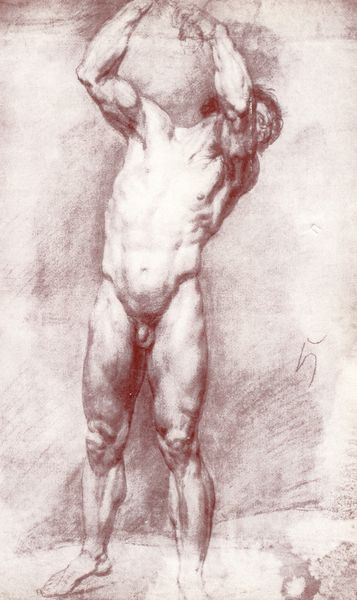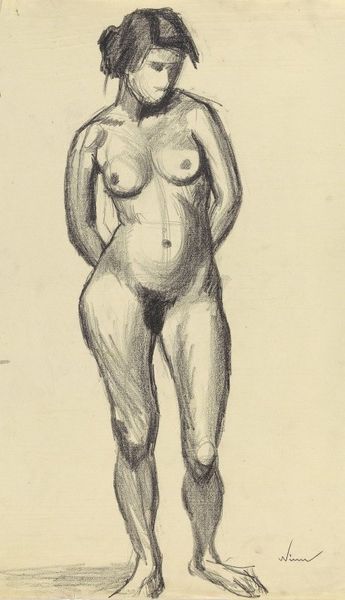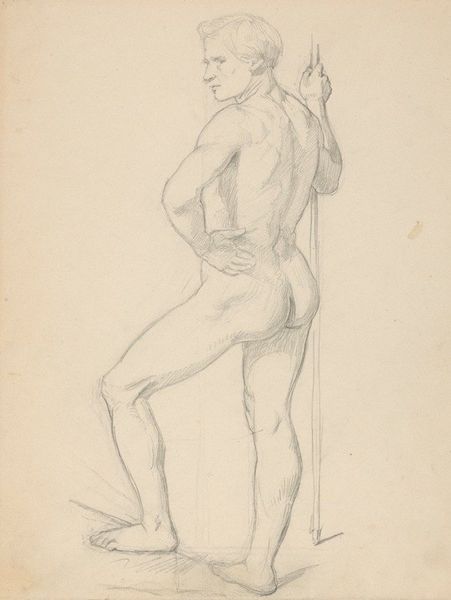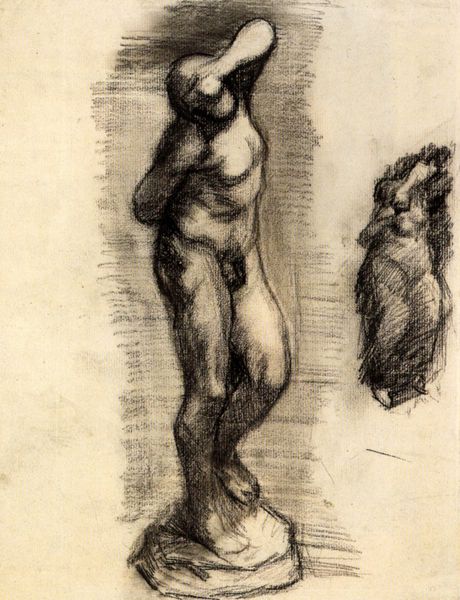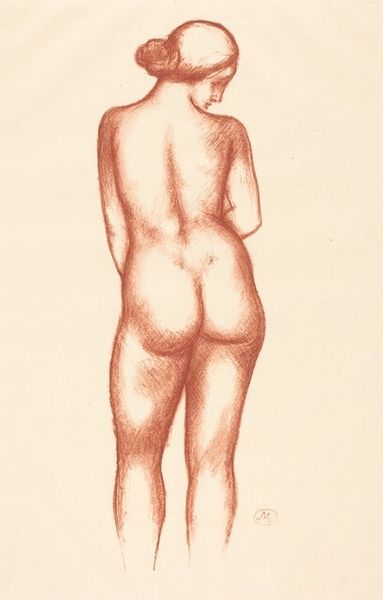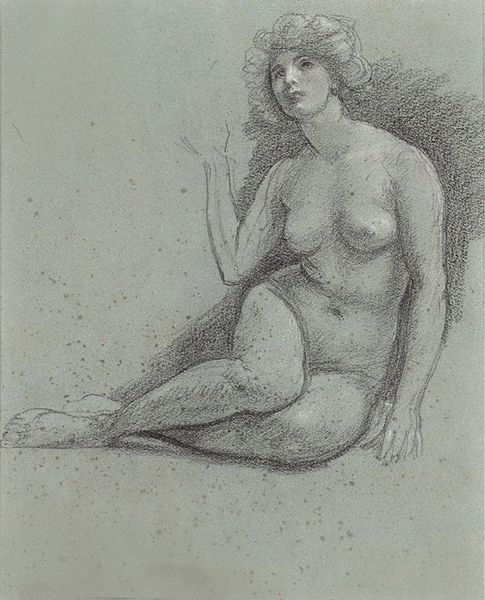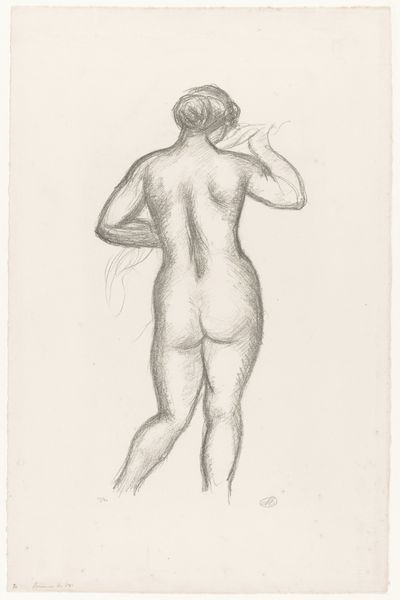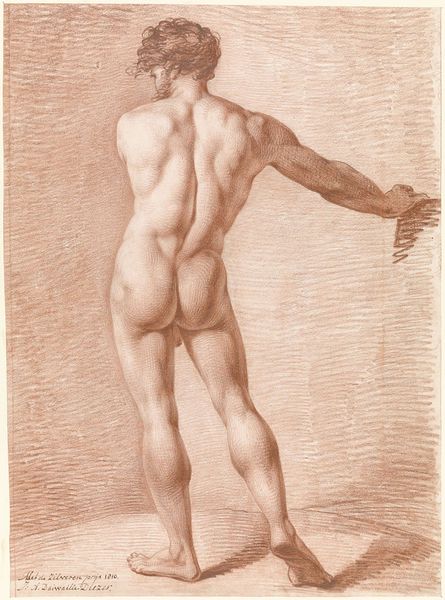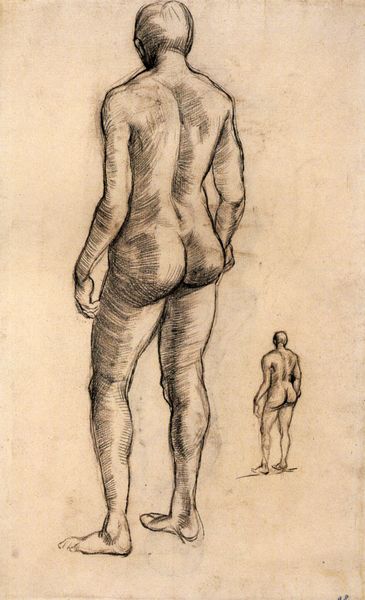
drawing, graphite
#
portrait
#
drawing
#
impressionism
#
charcoal drawing
#
form
#
female-nude
#
pencil drawing
#
line
#
graphite
#
portrait drawing
#
nude
#
realism
Copyright: Public domain
Editor: Here we have Van Gogh’s “Standing Female Nude Seen from the Back," created in 1886 using graphite and charcoal. There's something vulnerable yet strong in the way the figure is rendered. What’s your interpretation? Curator: The choice of subject aligns with Van Gogh's interest in depicting the human condition, which was of increasing interest to avant-garde circles. We see a focus on the everyday, rather than idealized forms, breaking away from academic traditions. How do you see this playing into the art world's reception? Editor: It feels like a shift away from glorification and towards honest representation. Was this considered radical? Curator: Absolutely. Nudity had historically been confined to mythological or allegorical settings. By portraying a contemporary, unidealized nude, Van Gogh was engaging in a dialogue about the acceptable subjects for art. Think about the societal views on the body during that time and how art functioned as a platform for negotiation. What might viewers have thought of this drawing if it had been publicly displayed at the time? Editor: Maybe shocked? It's a very direct depiction. Today it feels rather tame, yet the subject does gaze away, almost demure. Curator: Exactly. Its display or concealment signifies power. Was this art meant to educate, celebrate beauty, or serve a patron’s taste? Or was it a tool of protest, expanding who can participate in defining how bodies should be depicted? Editor: I hadn’t considered that before. Thanks, that helps see the artwork's role as a social object differently. Curator: It challenges what is included or excluded. Ultimately, we gain a better view of history.
Comments
No comments
Be the first to comment and join the conversation on the ultimate creative platform.
